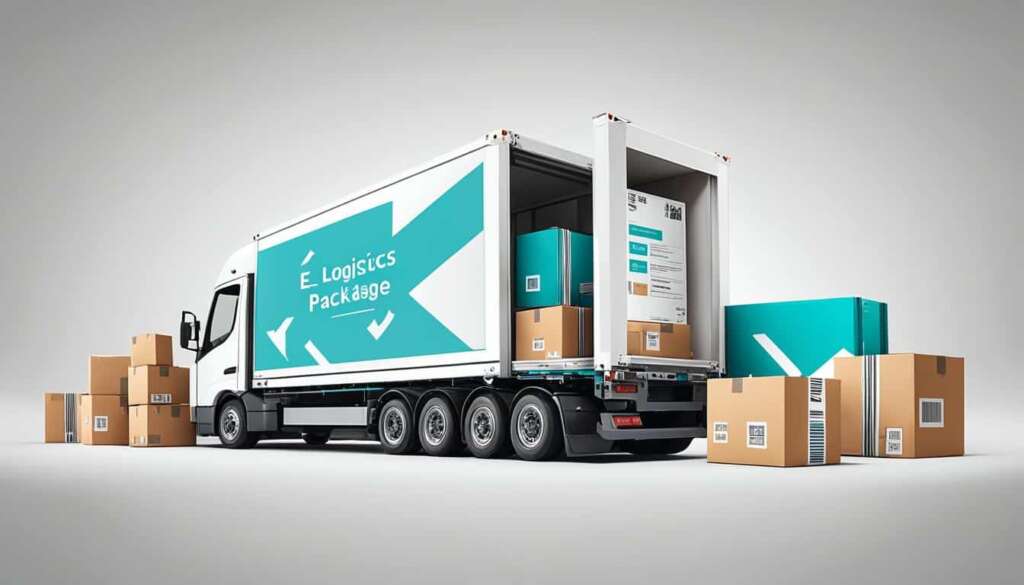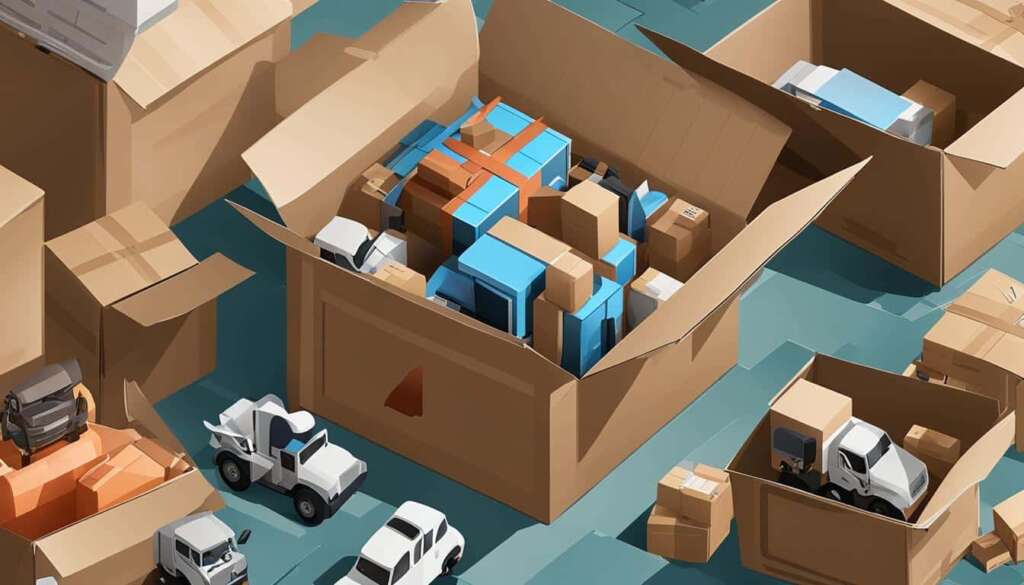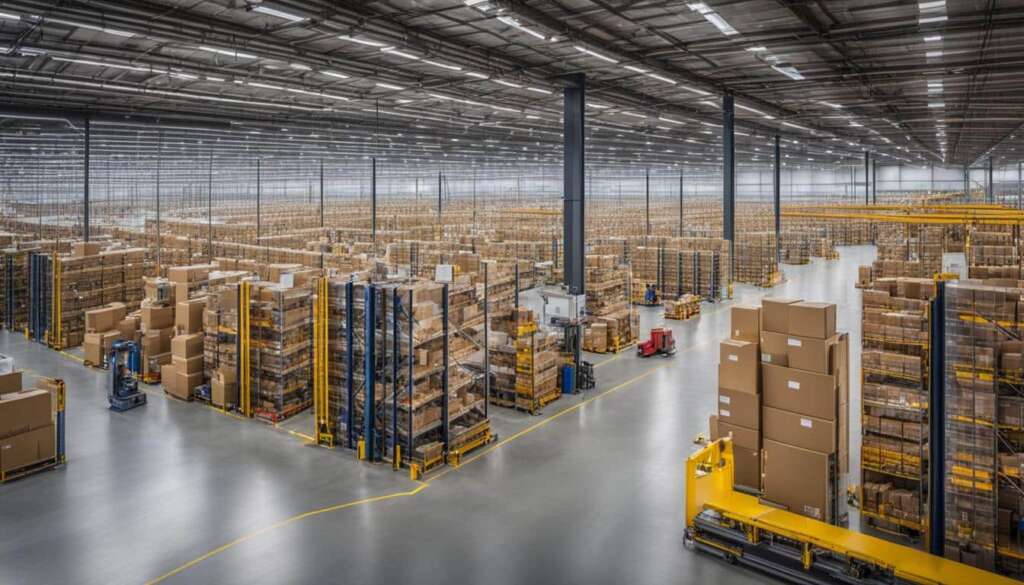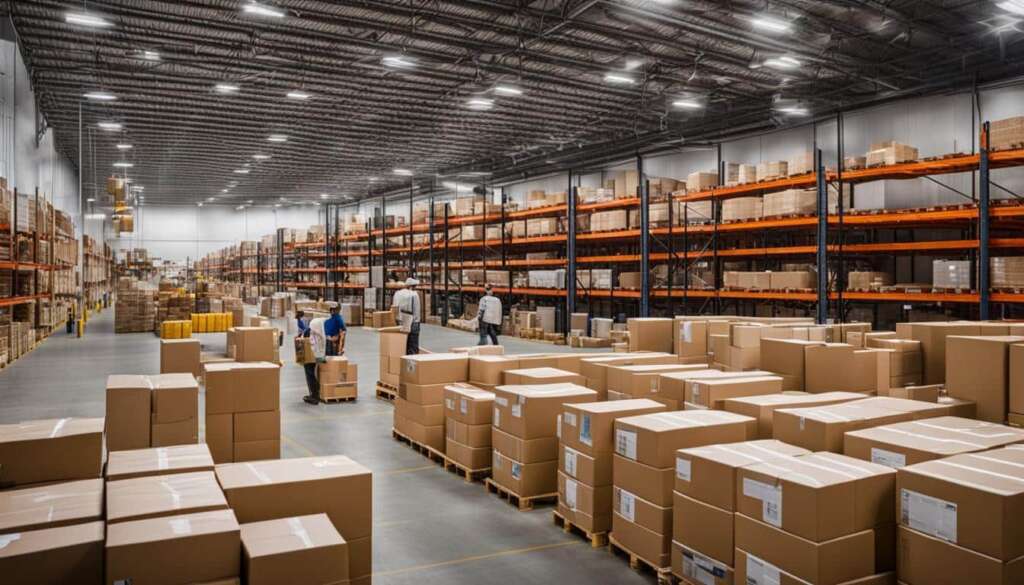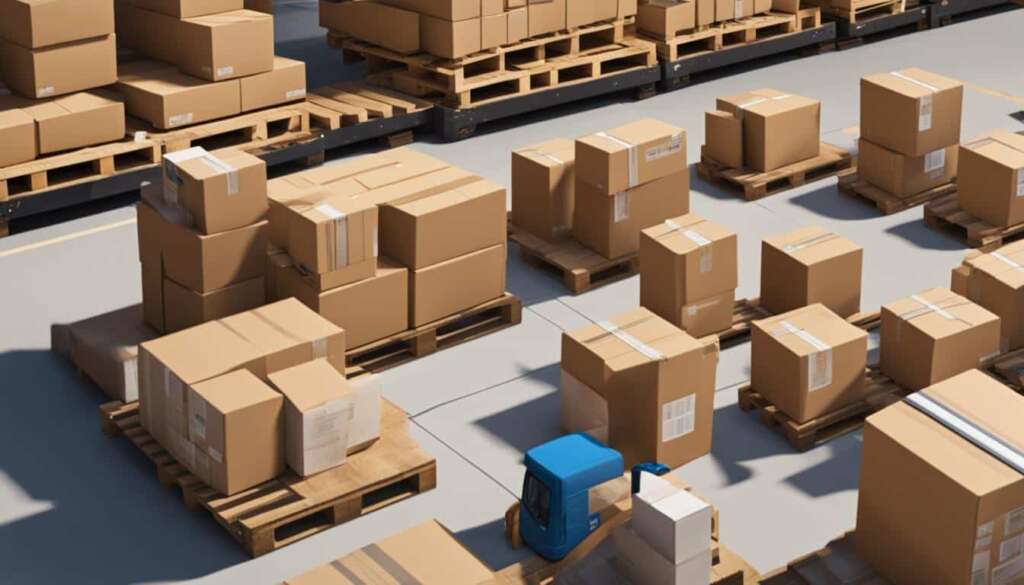Table of Contents
Welcome to our comprehensive guide on e-commerce logistics and how you can streamline your delivery processes. In today’s fast-paced online marketplace, efficient order fulfillment is essential for success. By optimizing your warehouse and fulfillment operations, you can offer reliable, fast shipping to improve customer conversion and reorder rates.
Streamlining your e-commerce fulfillment efforts can have a significant impact on your margins, customer satisfaction, and overall costs. In this article, we will provide you with 12 best practices to help you streamline your e-commerce logistics and ensure smooth, efficient delivery to your customers.
But first, let’s delve into why it is crucial to prioritize e-commerce logistics and how it can benefit your business.
Best Practices for Streamlining E-commerce Fulfillment
When it comes to e-commerce fulfillment, reducing friction and optimizing workflow are key to delivering exceptional customer experiences. By implementing the following streamlining best practices, you can enhance efficiency, accuracy, and customer satisfaction.
- Link Order Management and Fulfillment Services
- Ship from the Closest Warehouse
- Add Scans and Order Checks
- Automate Carrier Selection
- Maintain Optimal Inventory Levels
- Standardize Shipping Rules and Expectations
- Organize Warehouse Layouts
Automating tracking number notifications to customers can significantly reduce manual work and improve communication. By integrating order management and fulfillment tools with CRM solutions, you can speed up customer service requests and proactively address any issues that may arise.
To reduce expenses and meet delivery timelines, consider shipping products from the warehouse that is closest to the customer. This strategy can help minimize shipping costs and lead to faster deliveries, enhancing the overall customer experience.
Implementing barcode scans and order checks can minimize mis-picks and errors during the fulfillment process. By improving accuracy, you can reduce the possibility of order discrepancies, resulting in happier customers and fewer returns.
By automating carrier selection based on time and cost requirements, you can ensure affordable and timely shipping. This practice streamlines the shipping process and eliminates the need for manual carrier selection, saving both time and effort.
Keeping inventory levels in check is crucial to avoid overstocking or stockouts. By regularly monitoring inventory and setting replenishment triggers, you can maintain optimal stock levels, reduce storage costs, and ensure products are readily available for fulfillment.
Prevent misunderstandings and manage customer expectations by standardizing shipping rules. Clearly communicate delivery times, shipping offers, and return policies to customers, providing them with a transparent and consistent experience.
An efficient warehouse layout can significantly improve fulfillment operations. By organizing your warehouse to optimize pick paths, you can minimize travel time and increase productivity. Leverage technology, such as warehouse management systems, to optimize order picking routes and streamline operations.
Incorporating these best practices into your e-commerce fulfillment processes can lead to significant improvements in efficiency and customer satisfaction. By reducing manual work, automating processes, and optimizing workflows, you can streamline your operations and deliver a seamless fulfillment experience.
Importance of Streamlining E-commerce Shipping
Efficient shipping processes play a vital role in the success of any e-commerce business. Streamlining e-commerce shipping operations is essential as it improves customer satisfaction, reduces distribution costs, and enhances inventory management. By optimizing shipping processes, businesses can achieve prompt and accurate order deliveries, leading to increased customer loyalty and ultimately boosting sales.
When e-commerce orders are shipped out in a timely manner, customers are more likely to have a positive shopping experience and become repeat buyers. On the other hand, delayed or inaccurate deliveries can result in frustration and dissatisfaction, leading to lost sales and potential damage to the brand reputation. Therefore, it is crucial to prioritize the optimization of shipping operations as part of overall e-commerce logistics strategy.
By streamlining e-commerce shipping, businesses can improve efficiency while reducing errors and costs. For example, implementing automated shipment tracking and notifications can provide customers with real-time updates, improving transparency and trust. Integrating shipping data into CRM systems enables seamless customer service and issue resolution, reducing response times and enhancing the overall customer experience.
Benefits of Streamlining E-commerce Shipping:
- Improved customer satisfaction and loyalty
- Reduced distribution costs
- Enhanced inventory management
- Increased operational efficiency
- Enhanced brand reputation
- Reduced errors and order fulfillment delays
- Cost savings through better carrier selection and negotiation
Inefficient shipping processes can result in lost sales, increased costs, and dissatisfied customers. Streamlining e-commerce shipping is not just a matter of timely deliveries but also a crucial aspect of customer satisfaction and overall business success.
Additionally, efficient inventory management is closely linked to streamlined shipping operations. By optimizing inventory levels, businesses can avoid overstocking or understocking situations, reducing holding costs and ensuring product availability for timely order fulfillment. Well-managed inventory levels combined with efficient shipping processes provide businesses with a competitive edge by meeting customer expectations regarding product availability and delivery timelines.
Overall, the importance of streamlining e-commerce shipping cannot be overstated. By prioritizing and optimizing shipping operations, businesses can enhance customer satisfaction, reduce costs, and improve inventory management. This leads to increased profitability and growth potential.
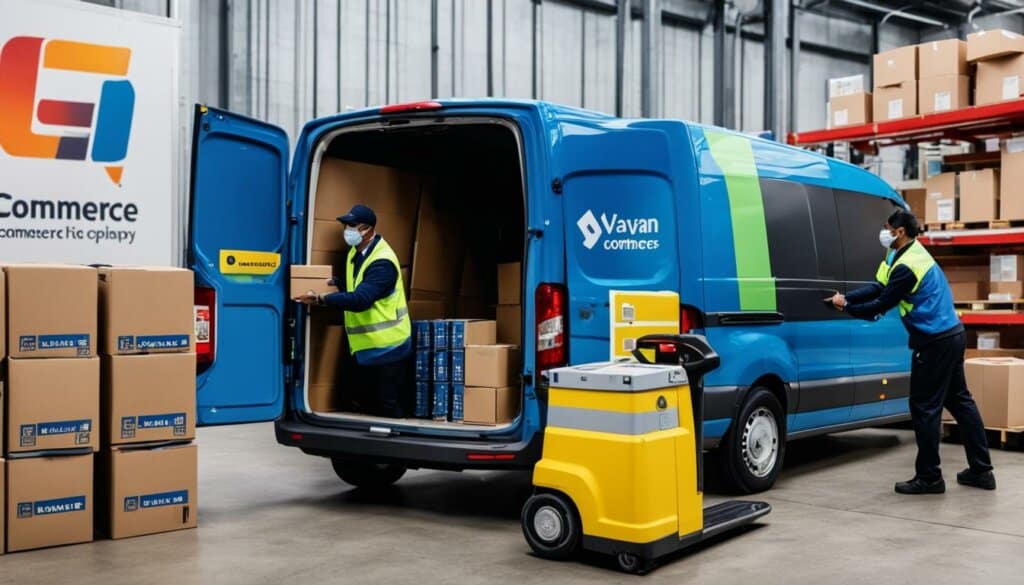
| Key Factors in Streamlining E-commerce Shipping | Benefits |
|---|---|
| Implementing automated shipment tracking and notifications | Increased transparency and customer trust |
| Integrating shipping data into CRM systems | Improved customer service and issue resolution |
| Optimizing inventory levels | Reduced holding costs and timely order fulfillment |
| Efficient carrier selection and negotiation | Cost savings and improved delivery speed |
| Accurate order fulfillment and reduced errors | Enhanced customer satisfaction and loyalty |
Top 10 Methods to Streamline Shipping Processes for E-commerce in 2023
To keep up with the growing demands of the e-commerce industry in 2023, it is crucial for businesses to streamline their shipping processes. By implementing efficient and effective strategies, e-commerce businesses can improve customer satisfaction, reduce errors, and enhance overall shipping operations. Here are the top 10 methods to streamline shipping processes for e-commerce in 2023:
- Set up automatic alerts for order tracking: Implementing automatic alerts for order tracking will keep customers informed about the status of their shipments, enhancing transparency and reducing customer inquiries.
- Synchronize shipping data into CRM systems: By integrating shipping data into customer relationship management (CRM) systems, businesses can streamline order management, improve customer service, and enhance overall shipping efficiency.
- Conduct periodic inspections: Regular inspections of the shipping process can help identify and address any issues or bottlenecks promptly, ensuring smooth operations and timely deliveries.
- Deliver orders from the closest warehouse to the customer: Optimizing your warehousing and fulfillment network to deliver orders from the nearest warehouse to the customer can significantly reduce shipping time and costs, improving overall customer satisfaction.
- Use automated courier allocation: Automatically allocating couriers based on predefined criteria such as delivery speed, cost, and reliability can streamline the shipping process, ensuring optimal carrier selection for each shipment.
- Automate replenishment triggers: Implementing automated replenishment triggers based on inventory levels and sales data can help businesses maintain optimal stock levels, reducing the risk of overstocking or stockouts.
- Provide realistic delivery estimates: Setting realistic delivery estimates based on historical shipping data and carrier performance will help manage customer expectations and improve overall customer experience.
- Store similar SKUs separately: Organizing inventory by storing similar stock-keeping units (SKUs) separately can expedite the picking and packing process, reducing errors and improving efficiency.
- Identify supply chain bottlenecks: Conducting regular reviews of the supply chain can help identify and address bottlenecks that may negatively impact shipping processes. Mitigating these bottlenecks will improve efficiency and reduce delays.
- Ensure achievable objectives: Establishing clear and achievable objectives aligned with your shipping processes will guide decision-making and help prioritize improvements, ensuring continuous optimization.
Implementing these top 10 methods can help e-commerce businesses streamline their shipping processes in 2023, resulting in improved efficiency, reduced errors, and enhanced customer satisfaction.
Conclusion
Streamlining e-commerce shipping plays a vital role in improving customer satisfaction, lowering costs, and optimizing inventory management. By implementing industry best practices and optimizing shipping processes, businesses can achieve faster and more accurate deliveries, resulting in increased customer loyalty. It is important to invest in efficient communication channels, advanced inventory management systems, and consider outsourced shipping to further streamline e-commerce operations.
Delivering a seamless shipping experience is crucial for the overall success of an e-commerce business. By prioritizing efficient order fulfillment, businesses can enhance customer satisfaction, reduce costs, and improve inventory management. Optimal coordination between order management and fulfillment services enables automated tracking notifications, reducing customer inquiries and improving transparency.
Furthermore, choosing the closest warehouse to the customer for shipping reduces transportation costs and ensures faster delivery times. Employing technology to minimize errors, standardizing shipping offers, and actively managing customer expectations prevents misunderstandings and improves overall shipping processes. Investing in organizational efficiency, utilizing technology tools, and leveraging data-backed insights can significantly enhance the e-commerce shipping experience for both businesses and customers.
FAQ
What is e-commerce logistics?
E-commerce logistics refers to the process of managing and optimizing the movement of products from the point of origin to the final destination in an e-commerce business.
Why is it important to streamline delivery in e-commerce?
Streamlining delivery in e-commerce is crucial for improving margins, customer satisfaction, and reducing costs. It enables businesses to offer reliable and fast shipping, leading to improved customer conversion and reorder rates.
What are the best practices for streamlining e-commerce fulfillment?
The best practices for streamlining e-commerce fulfillment include automating tracking number notifications, integrating order management and fulfillment tools with CRM solutions, shipping products from the closest warehouse to the customer, minimizing mis-picks and errors through scans and order checks, automating carrier selection, maintaining optimal inventory levels, standardizing shipping rules, and optimizing warehouse layouts.
Why is it important to streamline e-commerce shipping?
Streamlining e-commerce shipping is important for enhancing customer satisfaction, reducing distribution costs, and improving inventory management. It ensures prompt and accurate order deliveries, leading to increased customer loyalty and sales.
What are the top methods to streamline shipping processes for e-commerce in 2023?
The top methods to streamline shipping processes for e-commerce in 2023 include setting up automatic alerts for order tracking, synchronizing shipping data into CRM systems, conducting periodic inspections, delivering orders from the closest warehouse to the customer, using automated courier allocation, automating replenishment triggers, providing realistic delivery estimates, storing similar SKUs separately, identifying supply chain bottlenecks, and ensuring achievable objectives.

